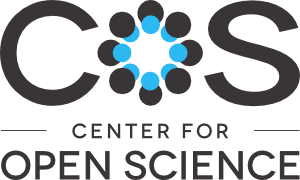Location
Our mission is to increase openness, integrity, and reproducibility of research.
These are core values of scholarship and practicing them is presumed to increase the efficiency of acquiring knowledge.
For COS to achieve our mission, we must drive change in the culture and incentives that drive researchers’ behavior, the infrastructure that supports their research, and the business models that dominate scholarly communication.
This culture change requires simultaneous movement by funders, institutions, researchers, and service providers across national and disciplinary boundaries. Despite this, the vision is achievable because openness, integrity, and reproducibility are shared values, the technological capacity is available, and alternative sustainable business models exist.
COS's philosophy and motivation is summarized in its strategic plan and in scholarly articles outlining a vision of scientific utopia for research communication and research practices.
Because of our generous funders and outstanding partners, we are able to produce entirely free and open-source products and services. Use the header above to explore the team, services, and communities that make COS possible and productive.
Members:
Resources
Displaying 411 - 415 of 447Comparing the profitability of farming and forestry
This paper updates an analysis of returns from major productive land uses in New Zealand carried out in 2008. Trends in profitability over time are shown, and a preliminary investigation of the relationship between land-use change towards forestry (new land planting) and forestry profitability is described.
Small forests, big ambitions and a hard reality - Community Forestry in Nepal
Community forestry in Nepal is intended to reduce poverty by sustainable management of forests. Timber is one of the most high-value forest products, especially in the case of Sal (Shorea robusta) forests in the Terai region of Nepal. Despite having several advantages, including high value forests on fertile land, connection with transportation networks, and being close to regional markets, community forests in the Terai region produce little or no timber from their Sal forests. This research looks at what is affecting the production of Sal timber from community forests.
Local Employment Growth, Migration, and Public Land Policy: Evidence from the Northwest Forest Plan
Debates over protecting public land reveal two views. Some argue protection reduces commodity production, reducing local employment and increasing out-migration. Others contend protection produces amenities that support job growth and attract migrants. We test these competing views for the Northwest Forest Plan (NWFP), which reallocated 11 million acres of federal land from timber production to protecting old-growth forest species. We find evidence that land protection directly reduced local employment growth and increased net migration.
Land grabbing in Eastern Europe: global food security and land governance in post - Soviet Eurasia
While ‘land grabbing’ in Africa by China, and other populous, high-income Asian countries such as South Korea got quite some attention, land grabbing in post-Soviet Eurasia has gone largely unnoticed. However, as this paper shows, recently also in the latter region foreign state and private companies are accumulating vast expanses of farm land. The paper discusses the factors which make post-Soviet Eurasia such an attractive area for international investment, with arguably much more potential than most areas in Africa or Asia.
An svm multiclassifier approach to land cover mapping
From the advent of the application of satellite imagery to land cover mapping, one of the growing areas of research interest has been in the area of image classification. Image classifiers are algorithms used to extract land cover information from satellite imagery. Most of the initial research has focussed on the development and application of algorithms to better existing and emerging classifiers. In this paper, a paradigm shift is proposed whereby a committee of classifiers is used to determine the final classification output.


